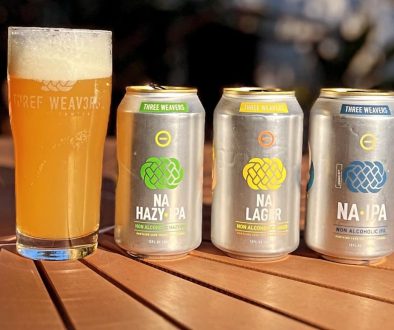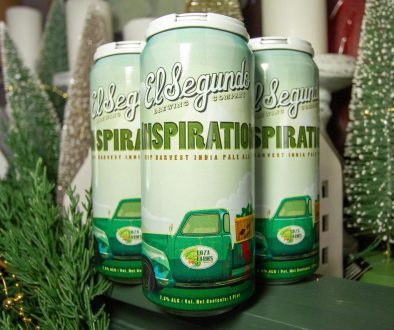Thoughts on the Rising Price of Beer
As I have turned to writing more about whiskey and less about beer, the inevitable has happened. I don’t get as many beer samples in the mail. This means I have to buy beer for the first time in years.
I mean, I’ve been buying draft beer when I go out all along, so I knew things were going up. I tend to drink more sessiony stuff at the bar, not the $12 pour of super-duper oompa-loompa barrel-aged headknocker, so it was reasonable. But recently I was in Altoona – not known for crazy prices, let me tell you – and I paid seven bucks for a plain old brewpub IPA. Damn. And it wasn’t even a full 16 ounce pint!
Then I went to buy beer at the store to take home, and wow. I knew there were $20+ 4-packs out there, but those were limited releases. Not anymore. They’re $25, six-packs are running $14 and up, 12-packs go for what I used to pay for a case of pale ale.
This old guy remembers paying 75 cents for 20 oz. glasses of Pabst 40 years ago, and shaker glasses of brewpub blonde ale for a buck on weekdays. I understand that those days are long gone, just like a pound of ground round for under a buck. But pints were four or five bucks for a long time, and now they want seven?
Meanwhile, I’m still able to find decent bottles of wine for under $15, same as I could ten years ago. Wasn’t that once one of positives about beer, that you could get a great six-pack for much less than a great bottle of wine?
I remember the first time this happened across the craft segment. It was back in the early 1990s, and everyone was angsting about going to the six-dollar six-pack. It was going to kill craft brewing (well, micro brewing, it was that long ago), because no one was going to pay a buck a beer. S urprise: it turned out we would. I remember a couple brewers describing tense meetings where the hard decision was made to go to six bucks…and then nothing happened, the beer kept selling.

Funny thing is, the real problem, the real disaster came a couple years later when some brewers lowered prices to try to capture more volume. They did it out of desperation; new brewers were opening, and the rising tide wasn’t lifting the older boats enough to service their debt. They lowered prices to be more attractive, and the newer brewers also did it to stay competitive…and that downward spiral was at least one major factor in “The Shakeout” of the mid-90s, when many brewers closed, and things didn’t really start growing again till after 2001.
I remember that well enough to get nervous any time I see craft sixers for a couple bucks under the most common price. And as a friend says who was a brewer then, had the business go under, and is a (successful) brewer again now, ‘Not enough of the new guys have ever seen failure.’
Failure might be on the way, because cost inputs in brewing have gone up and up, and people don’t want to see more price increases in the cooler. How can they not, when I hear from brewers about double-digit increases in packaging prices (glass, cans, kegs), 50% jumps in energy costs, and (finally) increases in labor costs. That’s why prices go up…mostly.
But prices also go up sometimes because everyone’s waiting for the big brands – either in sales, or reputation and cachet – to go first, and when they do, everyone rushes to follow. That’s not collusion, they didn’t conspire to do it, it’s more like a stampede. When one buffalo starts running, pretty quickly they’re all running, because no one wants to get left behind.
None of us want to see higher prices. But we react particularly strongly when a price has been steady for years, a phenomenon economists call “sticky pricing.” Business owners may not have as many words about it as economists do (hint: they have a LOT), but they understand it.
An example: “When Coca-Cola was first introduced in 1886, the price of a bottle was set at five cents. The Coca-Cola Company did not change this price again for more than seventy years, despite experiencing a number of large increases in its costs over the period—including a threefold rise in the price of sugar in the 1920s.” (Pinelopi Goldberg and Rebecca Hellerstein, in “Sticky Prices: Why Firms Hesitate to Adjust the Price of Their Goods,” Current Issues in Economics & Finance V.13, N.10, Nov 2007)
Coke held off changing prices for as long as possible, because they knew we don’t like that, especially when there are other options. Brewers tend to do the same thing…but prices increase on a much shorter time scale these days (hey, everything changes quicker now, and that’s not just an old man saying that). They can only hold off so long, and then…well, one beery buffalo starts to run, and we all get trampled.
If it’s any consolation, whiskey prices have gone up so much that some of the bourbons I used to buy don’t even exist anymore. Distillers realized that they could age them three or four years longer, put them in a nicer bottle, and sell them for literally five times as much. And just like beer drinkers, bourbon drinkers squinted, shook a bit, said ‘well, okay,’ and forked over the bucks.
Those $12 bottles are never coming back, and neither are the $6 sixpacks. I don’t like it either, but there was never any law that made those prices the norm…just the law of supply and demand.




